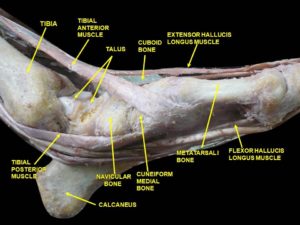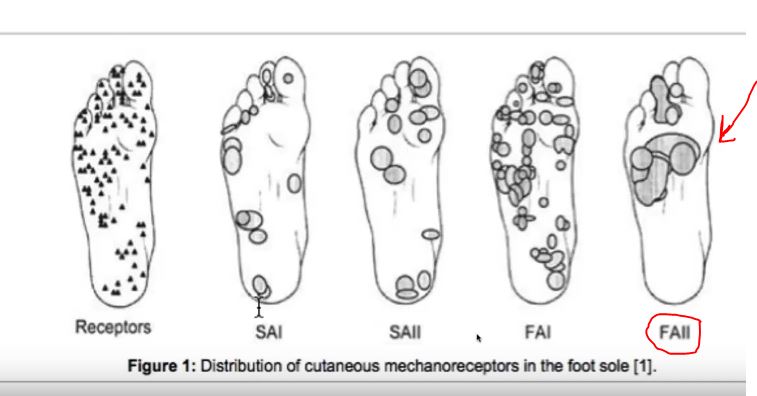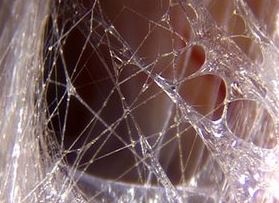restore: the legs program
barefoot training for improving sensory input
Barefoot Training Essentials
Welcome to the barefoot training area! There are many resources here for you that will help you thrive as an athlete.
There is a lot of misinformation about BALANCE training and proprioception training on the internet and within certain training and therapy circles. What you will read and learn here is the absolute cutting edge in both research and training.
- START with the 8-minute audio/video summary of what this area of the site is all about. I discuss my philosophy on barefoot training – and present some concepts that we’ll delve into here. I’ve included some power-point slides taken from my barefoot training clinic series.
- Next, you’ll find a video series of single-leg balance, dynamic single-leg stabilization, proprioception, and balance drills, designed to help you incorporate some of these skills into your training in a progressive way.
What are we waiting for? Let’s get started…
Part 1 – Barefoot Training: An Overview – Beyond Running!
What is proprioception?
It is our internal messaging system which provides sensory information regarding local joint position to the central nervous system (CNS). In return the CNS provides motor responses back down to the joints (muscles) ensuring adequate dynamic joint stability.
Did you know that humans have 10x the amount of proprioceptors (aka “mechano-receptors” or “interoceptors,” located within the fascia) in our feet, compared to virtually any other part of our body? It’s true!
Part 2 – Dynamic Single-Leg Stabilization, Proprioception, and Balance Drills
Barefoot training can be one KEY to becoming more durable, and healthier as an athlete. The reason?
Simply put: sensory input.
Before we get into the nitty-gritty with some videos and exercises, let me ask you a question:
 What comes to mind when you hear the word “proprioception”?
What comes to mind when you hear the word “proprioception”?
- Proprioception is one of our internal messaging systems that give us a sense of joint position. Kinesthetic awareness is a phrase often confused with proprioception. Kinesthetic awareness is different – that is our ability to sense the outside world and how we are moving within it.
- Joint position sense is a measure of proprioceptive awareness and joint stability.
- Stability is the foundation upon which force, power, and speed are transferred.
- Accurate joint position sense > faster joint stability > increased power and speed transmission.
- Our joints are only as stable as the rate at which they can perceive their position.
“I make sure to include some barefoot proprioception and balance drills as part of every run warm-up I do, and that my athletes do!”
Here’s the typical structure I would program as part of a RUN-WARM UP…
Move through it in a “tai-chi” like flow OR hit some short foot between each, your choice. Feel good.
———
1. SHORT FOOT, then SINGLE LEG balance (eyes open and closed).
——–
2. FLOOR TOUCH, then Short Foot.
——–
3. SINGLE LEG HIP HINGE, then some optional lunging, perhaps 2 to 3 steps forward and 2 to 3 to each side.
——–
4. LEG ABDUCTION, then Short Foot.
——–
5. BOWLERS SQUAT, then Short Foot.
——–
Finish with some VERTICAL QUADRAPED, then Short Foot.
How do we effectively improve our proprioception (and joint position sense) in order to reduce injury and improve performance?
 The answer lies in small sensory nerves located inside of multiple layers of fascia in and along the surface of our foot vs…
The answer lies in small sensory nerves located inside of multiple layers of fascia in and along the surface of our foot vs…
…the larger motor nerves which are located inside of muscles and tendon.
Take a good long look at the image above – note all of the small circles and other markers – all showing where those “small” nerve sensors (proprio or mechano-receptors) are located.
Small nerve proprioceptors include:
- Pacinian corpuscles, Ruffini’s corpuscles, Meisner’s corpuscles, Merkel’s discs.
What do these typically respond to?
- Light touch, vibration or deep pressure, skin stretch, texture perception.
On the other end of the spectrum, large nerves are responsible for us reactively responding to our environment. These are the ligaments, Golgi Tendon Organs, and Muscle Spindles.
The large nerve proprioceptors typically respond to muscle tension and muscle length.
Most of us have worn shoes throughout the course of our lives. Shoes, worn chronically, will weaken the intrinsic muscles of the feet and “deaden” our communication links to the ground through our feet.
 What is the largest and most sensitive sensory tissue in the body – containing the largest number of small nerves – and plays a role in joint position sense?
What is the largest and most sensitive sensory tissue in the body – containing the largest number of small nerves – and plays a role in joint position sense?
The answer is FASCIA. And the fascial system.
Fascia facts:
- Contains 10x as many sensory nerves vs. muscles.
- Known as the system of form & stability.
- Provides an ectoskeleton for muscle attachment.
- Contains collagen, elastin, myofibroblasts, hyaluronic acid (glue) all providing elastic recoil.
What is the key to superior foot and ankle stiffness and stability upon impact with the ground?
The answer? Fast response time!
Fast response time that leads to subtle shifts in joint stability….is reliant on small nerve proprioceptive input from the fascial network surrounding all joints.
Video 1: Basic Single Leg Balance
(If you’ve done RESTORE: The Foundation, then you recognize this video and skill. It will always come back to the basics and fundamentals first!)
Video 2: Dynamic Single Leg Proprioception and Balance
 In the 2 1/2 minute long video below, I demonstrate a progressive series of four “barefoot” training exercises to improve foot function and sensory input.
In the 2 1/2 minute long video below, I demonstrate a progressive series of four “barefoot” training exercises to improve foot function and sensory input.
This is ideally used as part of your running warm-up, or any time you’re about to embark on a series of dynamic movements that rely on that sensory information.
- All of these drills should be done barefooted to enhance small nerve proprioception and healthy foot function.
- Begin each exercise on a single leg and create a strong foot position with Short Foot exercise.
- Always include standing single-leg balance with eyes open AND closed, as part of your warm-up into this series of exercises. Do these as often as you can!
It all begins with developing and improving our ability to stand on a single leg and balance. Not only with our eyes open, but also with our eyes closed.
When our eyes are closed, we can’t rely upon that particular sense to help us orient and stabilize on a single leg. It comes back to our small nerve proprioception and vestibular systems to make it happen. This is so important!
Check out the short IG video below to learn more. And then get to work! 🙂
If you would like to print all of the written information on this page in PDF, you may do so by CLICKING HERE!
